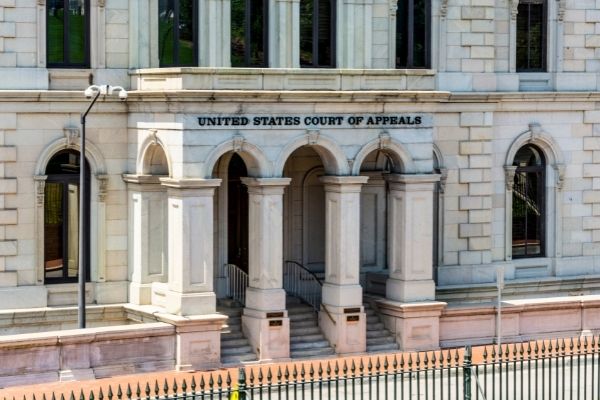Experienced Federal Appeal Attorneys: Proficient Depiction for Facility Instances
Experienced Federal Appeal Attorneys: Proficient Depiction for Facility Instances
Blog Article
Demystifying the Process of Federal Appeals: What You Need to Know
Browsing the detailed world of federal appeals can commonly appear like going across uncharted waters for those unfamiliar with the process. Comprehending the nuances of appellate court jurisdiction, the ins and outs of submitting a notification of allure, presenting a compelling brief, and making a persuasive oral argument are important elements that can substantially influence the end result of an instance. By untangling the layers of intricacy bordering government allures, people can get a more clear understanding into the systems that regulate this critical point of the legal system.
Understanding Federal Appeals Process
Exploring the detailed world of the government charms process unveils a systematic and structured journey through the judicial system. Federal allures function as a critical device for assessing choices made by lower courts. Understanding this process is essential for any person associated with legal proceedings at the government degree.
The process generally begins with a party disappointed with a lower court's ruling submitting a notification of appeal. This triggers a testimonial by a greater court, where a panel of judges assesses the lawful disagreements presented by both events. Briefs describing the legal thinking behind each event's setting are sent, and oral arguments might be heard to clear up complex concerns.
The appellate court's decision is based on a detailed evaluation of the reduced court's procedures and the debates presented. The judges do not reconsider truths however concentrate on whether legal errors happened that influenced the reduced court's choice. Once the appellate court reaches a decision, it can verify, reverse, remand, or customize the reduced court's ruling, offering clarity and finality to the legal conflict. Comprehending this procedure is crucial for browsing the intricacies of government allures properly.
Appellate Court Jurisdiction Explained
As we proceed from recognizing the government allures process to studying the ins and outs of appellate court territory, a basic facet emerges regarding the authority and limitations of these higher courts in the legal landscape. Appellate court jurisdiction refers to the extent of situations that a particular appellate court has the power to evaluate and choose upon. Unlike test courts that hear instances for the very first time, appellate courts are limited to reviewing choices made by lower courts. These choices can include judgments from both state and government courts.
Appellate courts have territory over specific sorts of cases, normally those involving lawful mistakes, procedural concerns, or questions of legislation instead than accurate disagreements. The jurisdiction of appellate courts is normally laid out in statutes and legislations that control the court system. Comprehending appellate court territory is crucial for celebrations entailed in the appeals process as it establishes whether a case is eligible for evaluation and the level to which the appellate court can intervene in the lower court's decision.
Declaring a Notification of Appeal
The preliminary action in commencing the federal charms procedure entails submitting a Notice of Appeal with the suitable appellate court. This critical document formally notifies the court and the other celebrations associated with the instance that the appealing party intends to seek an evaluation of the reduced court's choice. Submitting a Notification of Allure is a strict procedural requirement that sets the appellate process moving.
When preparing the Notification of Allure, it is important to guarantee conformity with the certain policies and standards of the appropriate appellate court. federal crime lawyer. The paper needs to normally consist of info such as the situation name, the lower court's name, the date of the judgment being appealed, and a concise statement indicating the grounds for the allure

Rundown and Dental Argument
In the appellate procedure, presenting composed briefs and participating in oral debates play critical duties in advocating for the appealing event's position prior to the appellate court. Briefs are comprehensive legal records that describe the events' arguments, legal authorities, and evaluation sustaining their settings. These composed entries offer the court with a thorough understanding of the truths of the instance, the relevant law, and why the appealing event thinks the lower court's decision must be rescinded.
Following the entry and testimonial of the briefs, oral arguments use the events an opportunity to further clarify their settings, resolve any questions the appellate judges may have, and emphasize bottom lines from their created briefs. Oral arguments are a possibility for the lawyers to convince the courts via spoken campaigning for and responses to questions from the bench.
Both the created briefs and dental arguments are essential elements of the appellate process, enabling celebrations to provide their situation completely and compellingly before the appellate court. - federal appeal lawyers
Receiving the Appellate Court Decision
The appellate court's decision is normally provided in a created format and details the court's final thoughts on the legal problems presented, the thinking behind their choice, and the judgment made. The time frame for receiving the appellate court's choice can vary, yet courts aim to offer prompt resolutions. Whether the appellate court verifies, reverses, or remands the reduced court's choice, understanding the implications of the ruling is crucial for all events included in the appellate procedure.
Verdict
In verdict, the government charms process is a complex yet crucial action in looking for justice. Understanding the appellate straight from the source court territory, filing a notification of appeal, preparing briefs, and offering oral debates are all essential elements of this procedure. Inevitably, getting the appellate court choice can give clearness and resolution to lawful conflicts. It is necessary to browse the government charms procedure with persistance and focus to information to attain a reasonable end result.
As we advance from comprehending the government appeals procedure to exploring the ins and outs of appellate court territory, a fundamental element comes to light pertaining to the authority and limitations of these greater courts in the legal landscape. Appellate court jurisdiction refers to the scope of situations that a particular appellate court has the power to make a decision and assess upon. Unlike trial courts that listen to cases for the first time, appellate courts are restricted to evaluating decisions made by reduced courts. Recognizing appellate court territory is critical for events involved in the appeals procedure as it determines whether a situation is eligible for review and the extent to which the appellate court can intervene in the lower court's choice.

Report this page